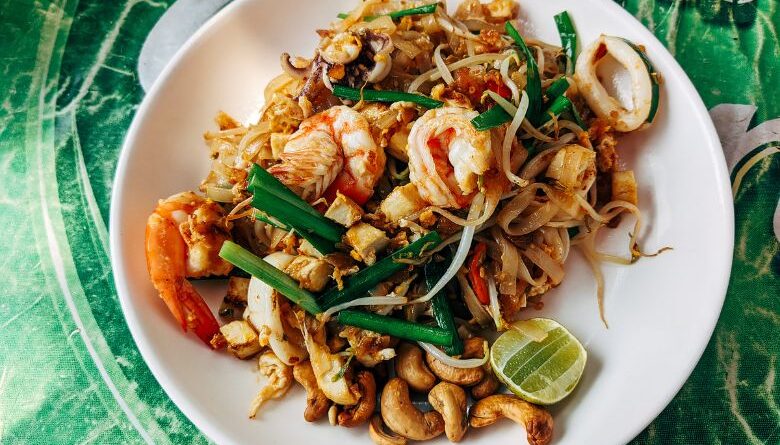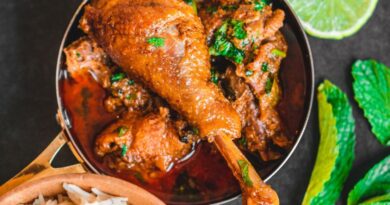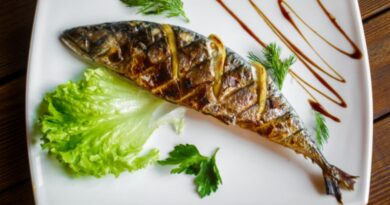Pad Thai Noodles: Exotic Thai Specialty
Pad Thai Noodles: Exotic Thai Specialty
Thai cuisine is renowned for its delectable and diverse flavors that leave food enthusiasts craving for more. Among the array of Thai dishes, Pad Thai stands out as an exotic specialty loved by people worldwide. This article delves into the history, ingredients, preparation, and sheer magic behind Pad Thai noodles—a dish that tantalizes the taste buds and takes you on a journey to the heart of Thailand.
1. A Brief History of Pad Thai
Pad Thai, also known as Phad Thai, is a quintessential Thai stir-fried noodle dish that has a fascinating history. It is believed that Pad Thai was introduced in the 1930s as a result of government efforts to modernize Thailand. To promote nationalism and unity, the government encouraged the consumption of rice noodles, which were native to Thailand. Consequently, Pad Thai emerged as a flavorful combination of stir-fried noodles, eggs, tofu, shrimp, bean sprouts, and crushed peanuts—a harmonious blend of Thai and Chinese culinary influences.
2. The Key Ingredients
The secret behind Pad Thai’s irresistible taste lies in its well-balanced mix of ingredients. The primary components include rice noodles, protein (such as shrimp, chicken, or tofu), eggs, bean sprouts, green onions, garlic, tamarind paste, fish sauce, and palm sugar. The use of tamarind paste adds a tangy twist to the dish, while fish sauce provides that umami flavor that is characteristic of Thai cuisine.
3. The Art of Preparing Pad Thai
Creating the perfect Pad Thai requires finesse and precision. The process begins with soaking the rice noodles to achieve the right texture. The ingredients are then meticulously prepped, ensuring a seamless cooking process. The wok sizzles with the aroma of garlic and eggs, followed by the addition of protein and vegetables. The tamarind paste, fish sauce, and palm sugar are harmoniously blended, coating the noodles and creating an explosion of flavors.
4. Tips and Tricks for the Perfect Pad Thai
To elevate your Pad Thai game, consider these expert tips:
- Soak the rice noodles in warm water for the ideal chewy consistency.
- Use a well-seasoned wok to prevent sticking and impart a smoky essence.
- Balance the sweetness and tanginess of the sauce according to your taste preference.
- Add a dash of chili flakes or chopped Thai chilies for a fiery kick.
5. Variations of Pad Thai
Over time, several regional and modern variations of Pad Thai have emerged. Some popular versions include:
a. Pad Thai Goong Sod: Features fresh prawns as the key protein. b. Pad Thai Jay: A vegetarian version that substitutes meat with tofu and vegetables. c. Pad Thai Kung Dang: Prawns are replaced with succulent lobster. d. Pad Thai Woonsen: Uses glass noodles made from mung bean starch for a unique twist.
6. Pad Thai’s Global Popularity
The enchanting flavors of Pad Thai have transcended borders, gaining immense popularity worldwide. It has become a staple in Thai restaurants across the globe, making it easily accessible for food enthusiasts eager to savor its authentic taste.
7. Serving and Presentation
The art of serving Pad Thai is equally important as its preparation. Traditionally, Pad Thai is served on a plate with fresh lime wedges, crushed peanuts, and a side of bean sprouts. These accompaniments allow diners to customize the dish to suit their taste preferences.
8. Pairing Pad Thai with Beverages
For a truly immersive dining experience, pair Pad Thai with the perfect beverages. The dish complements well with Thai iced tea, coconut water, or a chilled Singha beer, offering a refreshing contrast to its rich and vibrant flavors.
9. Health Benefits of Pad Thai
While Pad Thai is indulgent and flavorsome, it also offers some health benefits. The inclusion of fresh vegetables and protein sources like tofu and shrimp adds essential nutrients to the dish. However, moderation is key, as Pad Thai can be high in carbohydrates and sodium.
10. Secrets to Mastering Pad Thai Cooking
Becoming a Pad Thai virtuoso requires practice and patience. Experimenting with various ingredient proportions and cooking techniques will lead you to discover your perfect rendition. Embrace the process, and let your creativity flow in the kitchen.
11. The Perfect Balance of Flavors
The magic of Pad Thai lies in achieving the perfect balance of flavors—sweet, sour, salty, and spicy. This symphony of tastes dances on the palate, leaving an unforgettable impression on every food lover lucky enough to indulge.
12. Frequently Asked Questions (FAQs)
Q1. Is Pad Thai gluten-free?
Yes, when prepared with gluten-free tamari or soy sauce, Pad Thai can be made gluten-free.
Q2. Can I substitute shrimp with chicken in Pad Thai?
Absolutely! Chicken, beef, or tofu can be excellent alternatives to shrimp.
Q3. What gives Pad Thai its distinct orange color?
The use of tamarind paste imparts a reddish-brown hue to Pad Thai, giving it its signature appearance.
Q4. How spicy is Pad Thai?
The level of spiciness can be adjusted to suit your taste. If you enjoy a mild kick, use fewer chili flakes or omit them altogether.
Q5. Can I make Pad Thai in advance?
While it is best enjoyed fresh, you can store leftovers in the refrigerator and reheat them later. However, the texture might slightly differ upon reheating.
Conclusion
Pad Thai noodles are not just a dish; they are a delightful journey through the vibrant flavors of Thailand. From its humble origins to its global popularity, Pad Thai continues to captivate food enthusiasts with its intriguing blend of sweet, sour, and savory notes. So, the next time you crave a burst of exotic flavors, treat yourself to this Thai specialty!





Pingback: Spinach Quiche: Cheesy & Savory Brunch | UTHSI 2023